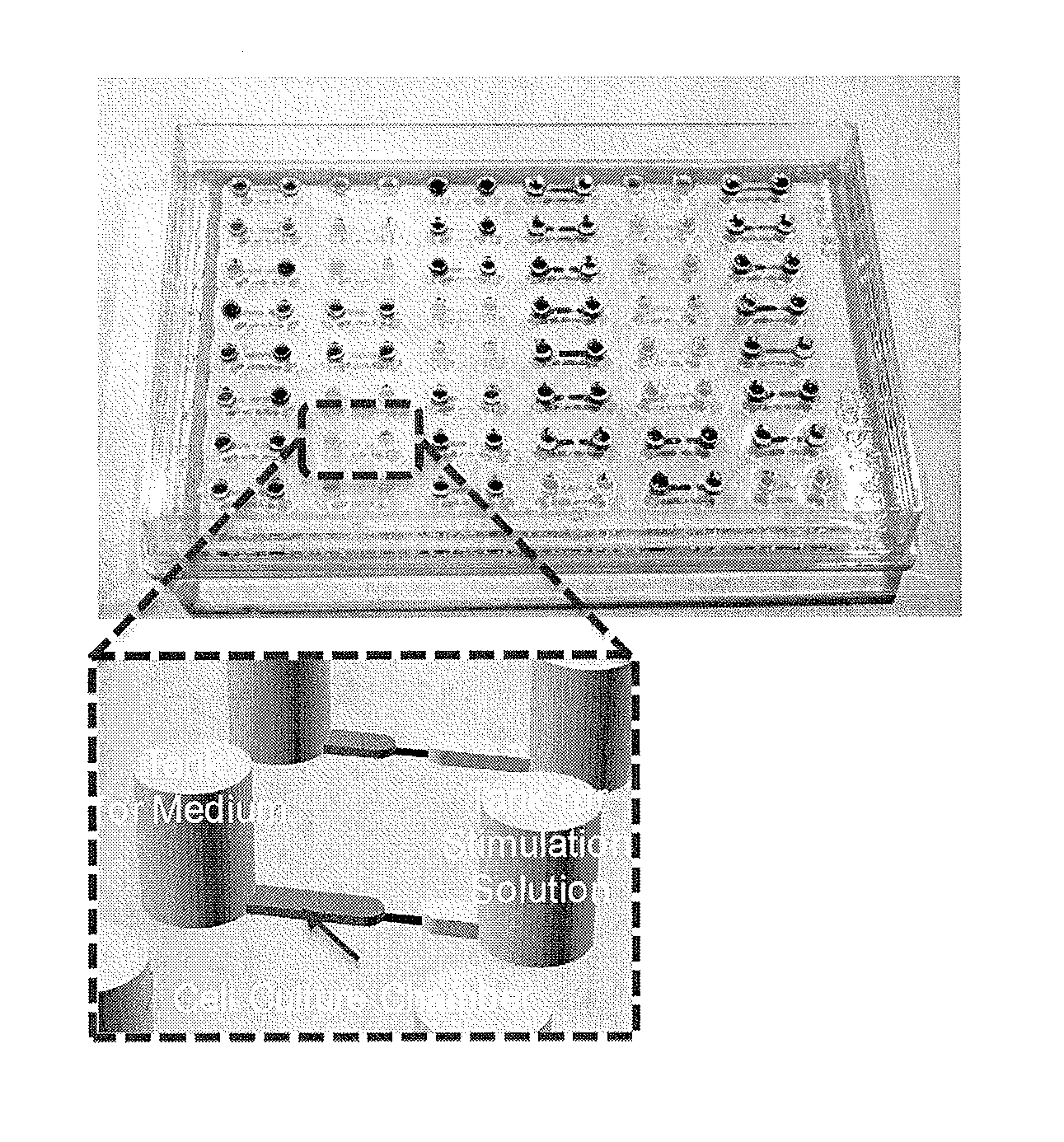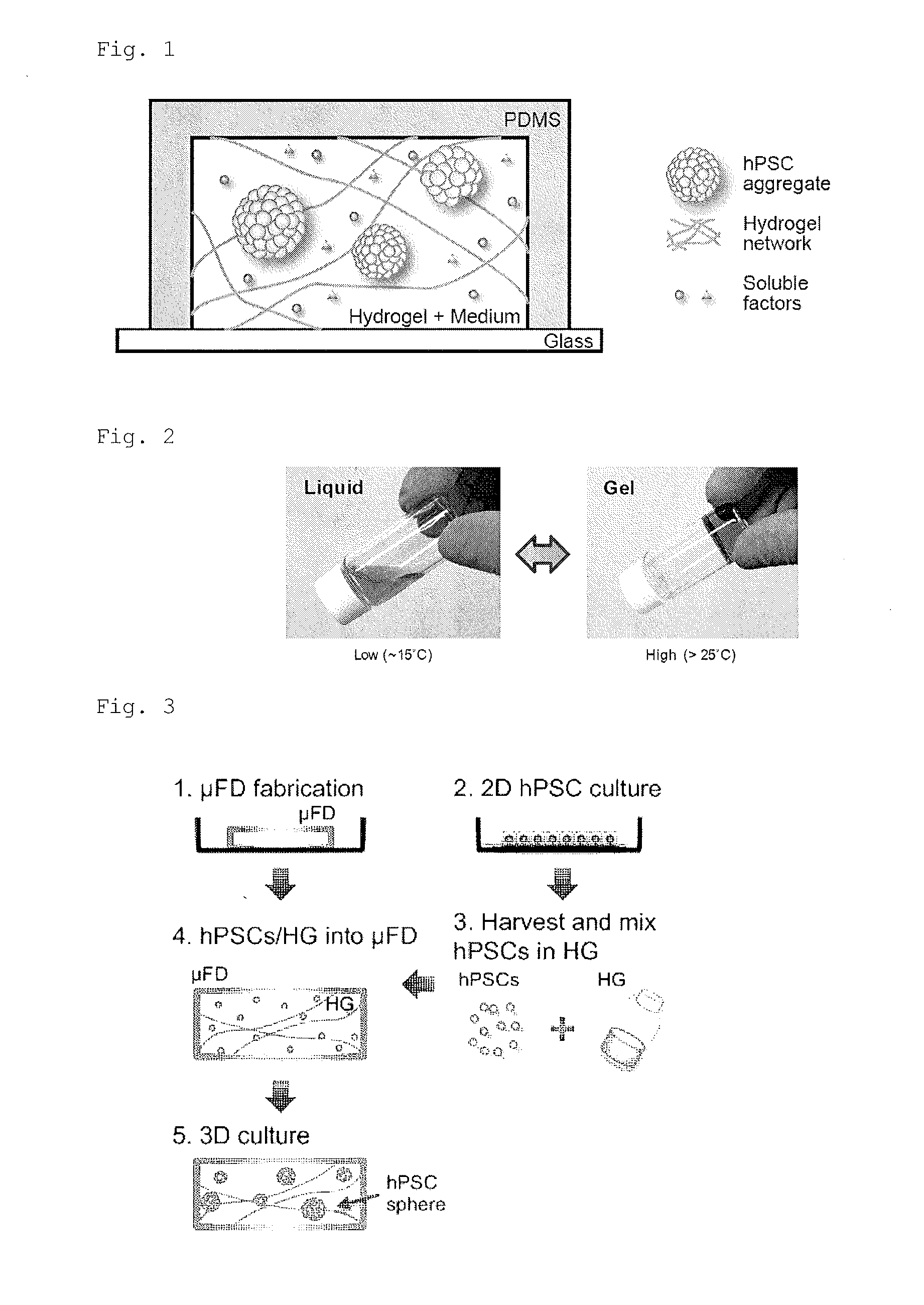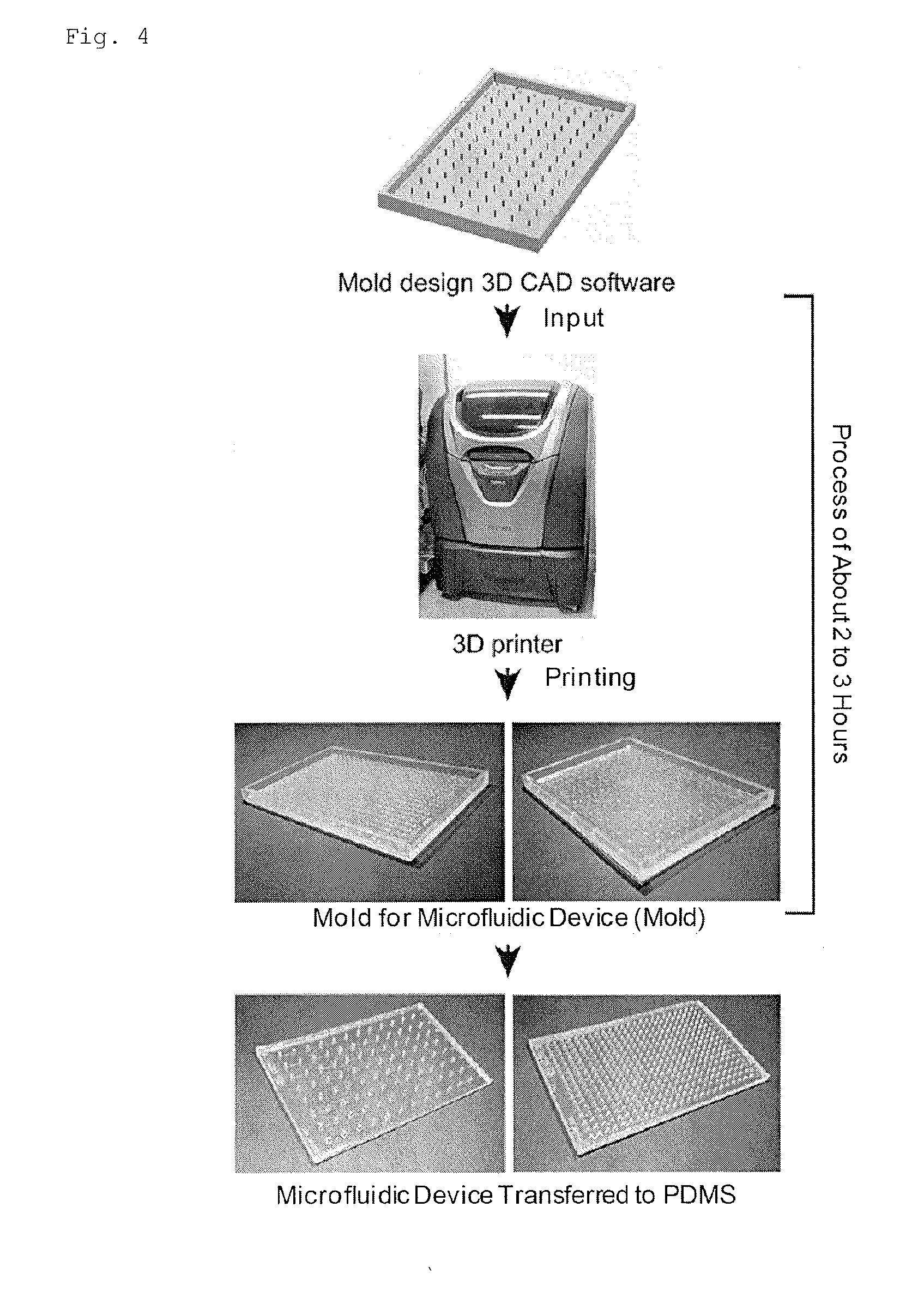Microfluid device and three-dimensional microculture method for cell
a microfluidic device and cell technology, applied in cell culture active agents, biochemistry apparatus and processes, sterilization of apparatus, etc., can solve the problems of inability to express original function, difficulty in realizing a 3d cell culture technique, and small environment, and achieve high throughput and contribute to the commercial viability of mammal pluripotent stem cells.
- Summary
- Abstract
- Description
- Claims
- Application Information
AI Technical Summary
Benefits of technology
Problems solved by technology
Method used
Image
Examples
example 1
Method for Producing a Microfluidic Device Using a 3D Printer
(1) Materials
[0089]SYLGARD® 184 Silicone Elastomer kit (base, curing agent) (Dow Corning)
Nunc OmniTray (Thermo scientific 165218)
Glass Bottom Dish (Iwaki Glass Co. Ltd.)
3D Printer AGILISTA (Keyence)
[0090]Corona Fit CFG-500 (Shinko Electric & Instrumentation Co., Ltd.) 3D-CAD (AutoCAD, Blender, and others)
(2) Operation Procedure
Preparation of Mold
[0091]1. A mask of a mold design, which will be a mold for the microchannel structure, is prepared by using 3D image graphics software (3D-CAD).
2. The mold design is converted into an stf file.
3. The stf file is transferred to the 3D printer and printed.
Preparation of PDMS with a Microchannel Structure
1. A silicone elastomer base is mixed with a curing agent in a ratio of 10:1 (weight ratio) using a stirrer (PDMS mixture).
2. The PDMS mixture is poured into the mold printed by the 3D printer.
3. Degasification is performed with a desiccator for 30 minutes.
4. Heating is perf...
example 2
A 3D Culture Method for Human Pluripotent Stem Cells Using Mebiol Gel (Phase Transition Gel)
(1) Materials
[0093]Mebiol gel, Mebiol Inc., PMW20-1001 (10 mL for dilution)
mTeSR1
Veritas Corporation, ST-05850
PUM
 Login to View More
Login to View More Abstract
Description
Claims
Application Information
 Login to View More
Login to View More - R&D
- Intellectual Property
- Life Sciences
- Materials
- Tech Scout
- Unparalleled Data Quality
- Higher Quality Content
- 60% Fewer Hallucinations
Browse by: Latest US Patents, China's latest patents, Technical Efficacy Thesaurus, Application Domain, Technology Topic, Popular Technical Reports.
© 2025 PatSnap. All rights reserved.Legal|Privacy policy|Modern Slavery Act Transparency Statement|Sitemap|About US| Contact US: help@patsnap.com



